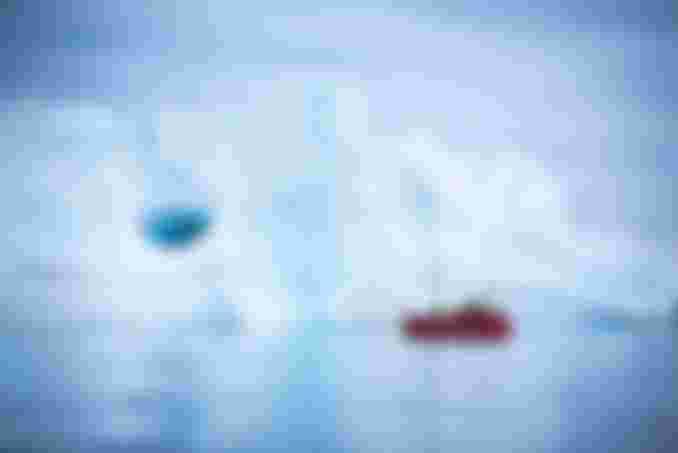An iceberg (below) is a large piece of ice that has broken away from a glacier or ice shelf. Icebergs in the North Atlantic mostly come from glaciers on Greenland, and those in the South Atlantic from the Antarctic.

• The word iceberg probably comes from the Dutch iceberg. or ice hill.
• Icebergs float because they are made of fresh water which is less dense than sea water. • Seven-eighths of an iceberg is below the surface of the sea, hence the expression "the tip of the iceberg". which means
that more is concealed than can be seen.
• The tallest iceberg ever measured was 168m high. It was seen in 1958 off Greenland and was as tall as a 50-storey skyscraper. • Small icebergs (those less than 1m high and 5m wide)
are known as growlers, because of the noise they make.
• Icebergs larger than growlers are called bergy bits; then they are graded small, medium, large or very large. Very large icebergs are those measuring more than 75m high and 213m wide.
• One of the biggest icebergs of recent times, known as B-15, broke away from the Ross Ice Shelf, Antarctica, in March 2000. It had an average length of 295km and width of 37km, giving it a total area about the size of Jamaica!
• The air trapped in iceberg ice - which is "harvested" and sold for use in drinks - may be as much as 3,000 years old. • At least 500 incidents have been recorded of ships striking
icebergs. In 1875, the 82 crew members of the schooner Caledonia were rescued after their ship sank and they spent a night sitting on an iceberg. The worst-ever disaster involving an iceberg happened when the Titanic struck an iceberg on 14 April 1912 and 1,503 lives were lost.
• During World War II, Lord Mountbatten led a programme devised by British inventor Geoffrey Pyke to build artificial icebergs to use as aircraft carriers, but the project, codenamed Habbakuk, was abandoned.
• About 10,000 to 15,000 new icebergs are formed every year. The process is called "calving".


